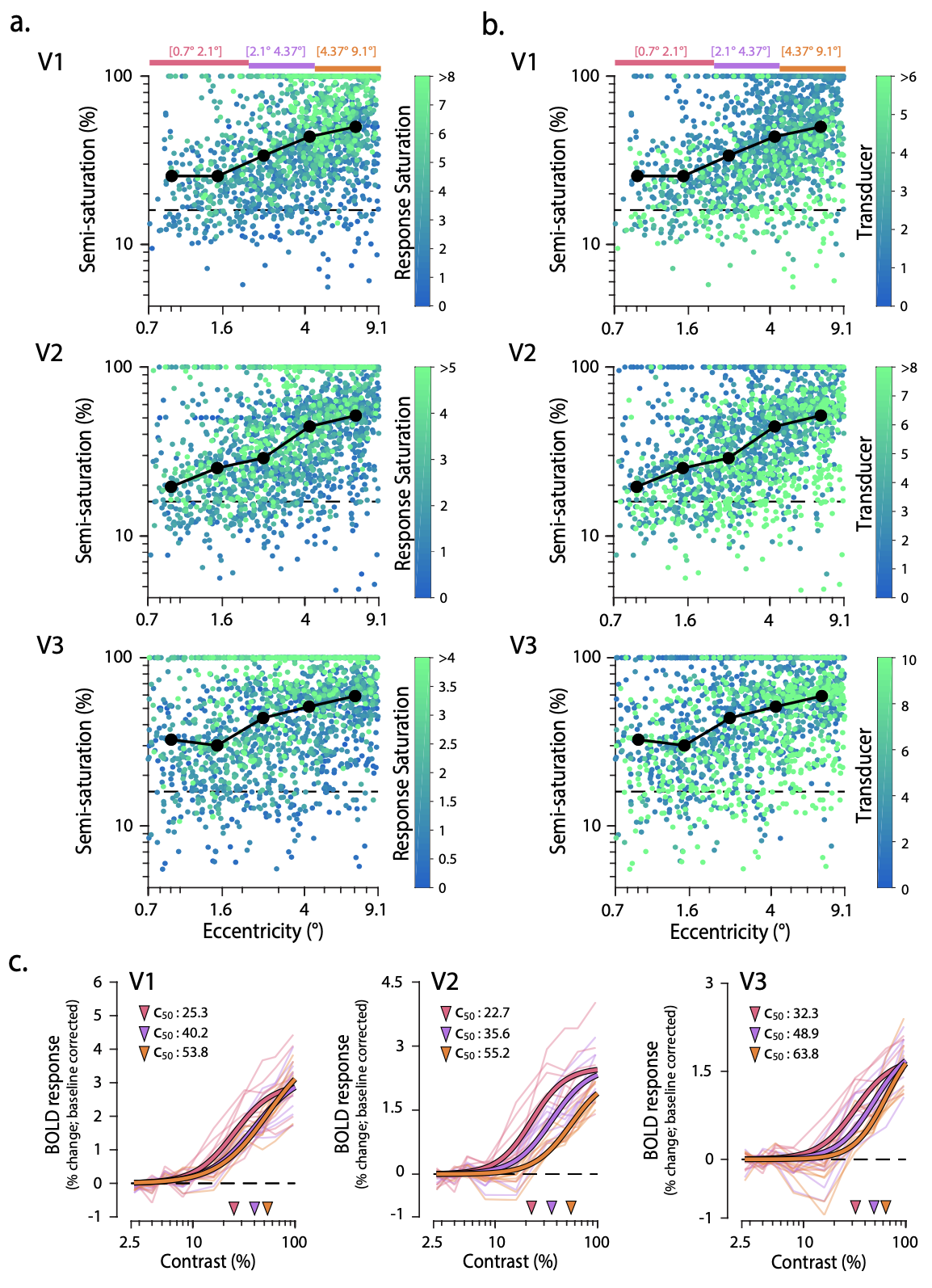Saturating nonlinearities of contrast response in human visual cortex
Journal of Neuroscience (2022)
Louis Vinke, Ilona Bloem & Sam Ling
 Response nonlinearities are ubiquitous throughout the brain, especially within sensory cortices where changes in stimulus intensity typically produce compressed responses. Although this relationship is well established in electrophysiological measure- ments, it remains controversial whether the same nonlinearities hold for population-based measurements obtained with human fMRI. We propose that these purported disparities are not contingent on measurement type and are instead largely dependent on the visual system state at the time of interrogation. We show that deploying a contrast adaptation paradigm permits reliable measurements of saturating sigmoidal contrast response functions (10 participants, 7 female). When not controlling the adaptation state, our results coincide with previous fMRI studies, yielding nonsaturating, largely linear contrast responses. These findings highlight the important role of adaptation in manifesting measurable nonlinear responses within human visual cortex, reconciling discrepancies reported in vision neuroscience, re-establishing the qualitative relationship between stimulus intensity and response across different neural measures and the concerted study of cortical gain control
Response nonlinearities are ubiquitous throughout the brain, especially within sensory cortices where changes in stimulus intensity typically produce compressed responses. Although this relationship is well established in electrophysiological measure- ments, it remains controversial whether the same nonlinearities hold for population-based measurements obtained with human fMRI. We propose that these purported disparities are not contingent on measurement type and are instead largely dependent on the visual system state at the time of interrogation. We show that deploying a contrast adaptation paradigm permits reliable measurements of saturating sigmoidal contrast response functions (10 participants, 7 female). When not controlling the adaptation state, our results coincide with previous fMRI studies, yielding nonsaturating, largely linear contrast responses. These findings highlight the important role of adaptation in manifesting measurable nonlinear responses within human visual cortex, reconciling discrepancies reported in vision neuroscience, re-establishing the qualitative relationship between stimulus intensity and response across different neural measures and the concerted study of cortical gain control

